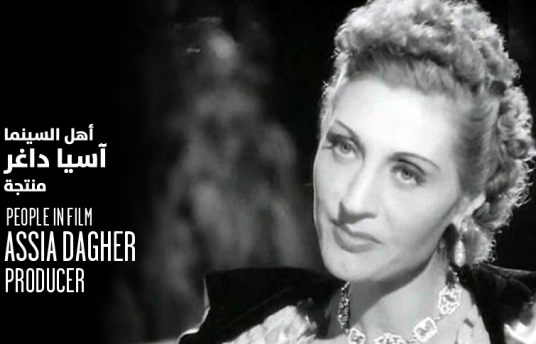People in Film: Assia Dagher
Mar 06, 2012

DFI: Can you tell us a little bit about the Lebanese producer Assia Dagher?
Ghandour: She is without a doubt the pioneer of Arab cinema of the last century. Her real name is Almaza Dagher. She was born in 1908, in Tannourine, Lebanon.
In 1919, after the revolution against British occupation of Sudan and Egypt, the latter attracted lots of intellectuals who left Lebanon because of the French colonialism. Assia Dagher moved there after her uncle.
The first time she acted was in 1926 in a film called “Layla”, directed by Wadad Orfi. Dagher was the first Syrian (Lebanon was then part of greater Syria) to be on the big screen.
DFI: Can you briefly sum up Dagher’s work as a producer and actor in Egyptian cinema?
Ghandour: She failed completely as an actress because she exaggerated a lot her performances and had a Lebanese accent. But she is the master of refined cinema for over half a century. At some point in her career she formed a trio under the name of “Louts Films” with directors Ahmad Galal and the actor and producer Mary Quenny.
DFI: Were there many other female executives in the film industry then?
Ghandour: There was Aziza Amir during the same period, and the first to make a film, Bahija Hafez actress, script writer, director and composer and Fatma Roshdy. But what distinguishes Dagher is her extraordinary intelligence and hard work. She used to work 19 to 20 hours a day, non-stop. And what’s striking is the fact that she was partially illiterate and used to memorize all the scripts. Despite this, she was able to do excellent follow ups and would immediately notice when a director went off-script. Mary Quenny used to read her the scripts; Dagher would memorize them.
She was also adventurous, and loved to take risks. She is the first producer to make a sci-fi film called “Uyun Sahira” (1934) (Bewitching Eyes), directed by Ahmad Galal. She also produced a historical film called “Chagarat al-dorr” (1935) (Tree of Pearls). She combined all film genres during her career. She produced the first film that took place completely in the street, and whose duration is the same as the shooting time called “Hayat Aw Mot”.
DFI: What challenges might Dagher have faced back then?
Ghandour: They were following the Hollywood model, but didn’t have the same means. There were no producers, distributions, script writers… not even actors. So to do a film, they used to gather friends and family and as Mary Quenny mentioned once to me, they also used to hang the negatives on the roof to dry.
From 1928 until her last film in 1972 “El Shaytan wil Kharif” (The Devil and the Fall), Dagher presented 49 films. She witnessed the political turmoil and wars of the period, and her films reflected her political opinions like in “Salah El Din”, a tribute to late Egyptian president Gamal Abdul Nasser.
DFI: Can you reveal a little about Dagher’s personal life? Was she married? Is she survived by children?
Ghandour: She was married to a man called Georges Sarkis and had a daughter called Helene. But when she started in the movie business, she never revealed she had children. She changed her name to Mona, and said that she adopted her. Not so good for her poor daughter who featured in almost all of Dagher’s films. The reason she did that is that female actors the period weren’t supposed to have children.
DFI: Can you briefly name her three most famous acting and directing discoveries?
Ghandour: The list is huge. To name a few: director, scriptwriter and actor Ahmad Galal, Marry Quenny, the star of the 1940s and to Youssef Chahine. She gave him his biggest chance with “Nasser Salah El Din”. As for actresses, of course Sabah and the great comedian Abdul Salam el Nabulsi. She also offered legendary Faten Hamama her most important roles. She had the rare talent of combining financial profit and quality films, an artistic sensitivity that she never compromised for the sake of money.
DFI: Which three Dagher films would you recommend?
Ghandour: “Rudda Kalbi” (Return My Heart Back) (1958),
“El Nasser Salah el-din” (Saladin The Victorious) (1963) and
“Yawmiyat fil Aryaf” (The Diary of a Prosecutor Among Peasants) (1969).
DFI: What is her overall contribution to Arab cinema?
Ghandour: In my opinion, there wouldn’t have been a cinema without her. I know it’s a big statement but all the big of directors and some of the actors we know discoveries of Assia Dagher.